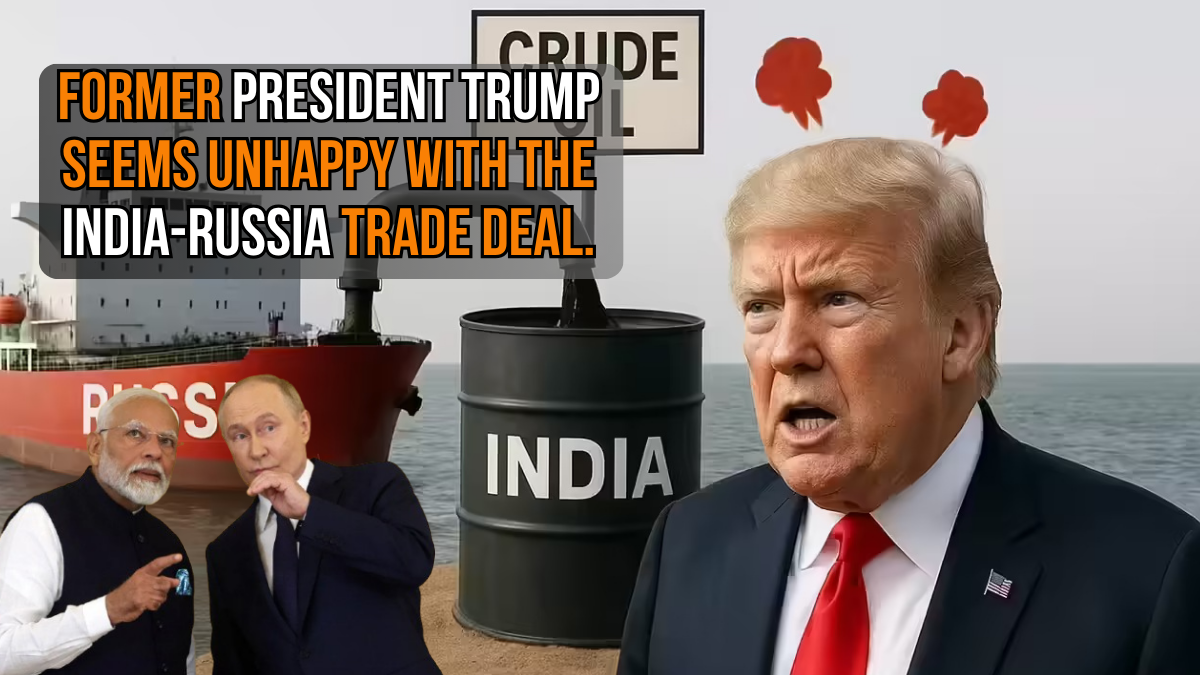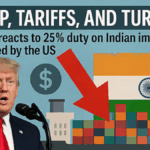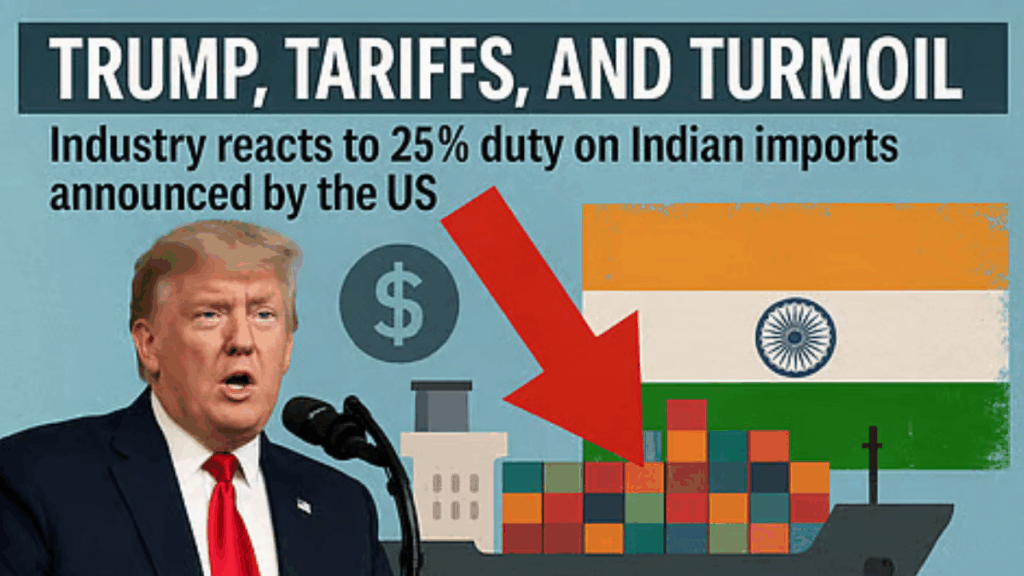India’s strategic energy partnership with Russia is facing unprecedented disruption. After former US President Donald Trump announced a 25 percent tariff on Indian imports and proposed a separate penalty for Russian oil trade, experts now warn of a massive spike in India’s oil bill. Analysts estimate that if India is forced to pivot from discounted Russian crude, the additional burden could total between $9 and $11 billion annually. This development threatens not only to squeeze the margins of Indian refiners but also to shake up domestic fuel prices and inflation management.

Summary Table: India Faces $11 Billion Oil Bill Surge:

Key Detail |
Information |
|---|---|
Triggering Event |
Donald Trump announces 25% tariff on Indian imports + penalty on Russian oil |
Potential Financial Impact |
$9–11 billion increase in India’s oil import bill |
Main Risk Factors |
US secondary sanctions, EU sanctions, loss of Russian oil discounts |
Current Russian Crude Share in India |
35–40% of India’s total oil imports |
Key Indian Refiners Affected |
Reliance Industries, Nayara Energy |
Government Response |
“Taken note,” analyzing trade implications |
Official Source |
The Cost of Losing Russian Discounts
Since the Russia-Ukraine conflict began in 2022, India has rapidly increased its intake of discounted Russian crude, replacing costlier Middle Eastern suppliers. Before the war, Russia accounted for just 0.2% of India’s imports. Today, that figure stands at over 35%, making Russia India’s largest crude supplier.
According to Kpler, a global analytics firm, India currently imports around 1.8 million barrels per day of Russian oil. If the discount of $5 per barrel is lost, it could inflate India’s import bill by $9–11 billion annually.
“This is a financial squeeze from both ends,” says Sumit Ritolia, Lead Analyst at Kpler.
EU Sanctions and Secondary US Sanctions: A Double Blow
The pressure is not just from Washington. Starting January 2026, the European Union is set to ban imports of refined fuels made from Russian-origin crude. This impacts India’s refining-export strategy, where companies like Reliance Industries have been refining Russian oil and exporting diesel to European markets.
Now, if secondary US sanctions restrict shipping, insurance, or financing channels supporting this trade, India’s crude sourcing flexibility could take a massive hit.
Who’s Most Affected? Reliance and Nayara in the Spotlight
India’s private refiners—Reliance Industries and Nayara Energy—import more than half of all Russian oil entering the country. Nayara, which is partially owned by Russia’s Rosneft, has already come under EU scrutiny. Meanwhile, Reliance, with its dual refinery setup, sends large diesel volumes to Europe.
In 2024, Reliance exported an average of 200,000 barrels per day to Europe. That number slightly dropped in 2025 but still accounts for a major revenue stream. Losing access to EU markets or cheaper crude would directly impact refining margins and profitability.
Strategic Flexibility: Can India Shift to Alternatives?
In theory, India can turn to suppliers in the Middle East, West Africa, or Latin America. However, several factors complicate this shift:
- Contractual Rigidities: Middle Eastern suppliers often have long-term deals that limit flexibility.
- Quality Mismatches: Russian Urals crude suits Indian refineries. Other blends may reduce yield.
- Shipping Costs: Longer routes mean higher freight costs and slower delivery cycles.
- Tighter Margins: Alternative sources offer no discounts, hurting profitability.
“The risk extends beyond supply to profitability,” adds Ritolia.
Will India’s Domestic Fuel Prices Be Impacted?
Yes, potentially. If oil costs rise significantly and refiners pass on the burden, retail petrol and diesel prices could surge. The government may be forced to intervene via subsidies, adding further fiscal strain.
A disrupted supply chain and more expensive imports could also increase inflationary pressure, complicating monetary policy and exchange rate management.
Government’s Position: Strategic Silence with Tactical Planning
India has officially stated it is reviewing the situation. The Ministry of Commerce said it “has taken note” of Trump’s announcement and is studying its implications.
“We remain committed to a fair, balanced, and mutually beneficial trade agreement,” the ministry said.
Meanwhile, Indian refiners are gradually reducing reliance on Russian crude in anticipation of possible sanctions but are far from completely pivoting.
Trump’s Statement and India’s Oil Reality
Speaking to reporters, Donald Trump claimed he “heard” India had stopped buying Russian oil. However, Indian officials quickly refuted this.
“Indian refiners continue to source oil from Russian suppliers based on price, grade, inventory, and logistics,” government sources told ANI.
The real picture shows no immediate halt. Instead, India is navigating a cautious middle ground, keeping trade channels open while preparing for diplomatic and supply chain contingencies.
Implications for Indian Economy
- Fiscal Deficit: An $11 billion jump in oil imports could widen the fiscal gap.
- Current Account Deficit (CAD): Worsening oil bills can sharply increase CAD, weakening the rupee.
- Monetary Policy: Rising inflation could force the Reserve Bank of India (RBI) to delay rate cuts.
- Investment Sentiment: Higher energy costs could dampen industrial output and investor confidence.
FAQs: Frequently Asked Questions
Q1: Is India still buying oil from Russia?
Ans. Yes. Despite Trump’s claim, Indian refiners continue sourcing crude from Russia, driven by economic factors.
Q2: What is the potential cost of switching away from Russian oil?
Ans. Analysts estimate a $9–11 billion increase in India’s annual oil bill.
Q3: Can India replace Russian crude with Middle Eastern oil?
Ans. Partially, yes. But challenges in quality, pricing, and shipping logistics make it costly and complex.
Q4: How does this affect Indian fuel prices?
Ans. Loss of discounted crude could lead to higher retail fuel prices unless the government intervenes.
Q5: What is the government’s response to Trump’s penalty?
Ans. India is reviewing the situation and remains committed to balanced trade negotiations with the US.
Conclusion
India stands at a crucial juncture in its energy policy. The potential fallout from Trump’s penalty and EU sanctions on Russian crude puts India’s economic and strategic oil decisions under the global spotlight. While transitioning to alternative sources is possible, it will be financially and operationally taxing. Maintaining energy affordability without compromising diplomatic objectives will test New Delhi’s policy agility like never before.
For More Information Click Here










